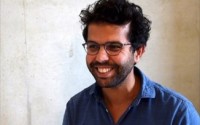
Hundreds of thousands of new cases of spinal cord injury occur each year, disrupting the lives of patients and their families. There is currently no cure for damaged nerve functions, but promising new medical approaches are emerging. A pioneer and eminent figure in nanotechnology applied to neuroscience, Italian professor Maurizio Prato explores the possibility of constructing a prosthetic bridge in carbon nanotubes connecting the affected ends of the spinal cord. With the support of AXA Research Fund, he and his team have already achieved remarkably encouraging results: "We have shown that these tiny cables, 50,000 times smaller than a human hair, are able to effectively restore the electrical connection between whole pieces of spinal cord ".
Finding a cure to the irreversible damages caused by spinal cord injuries
Prof. Maurizio Prato
Project pageDiscover research projects related to the topic
Mécénat des Mutuelle
France
CLIMABRAIN: Impacts of Extreme Weather on the Most Vulnerable Living with Alzheimer's disease
In the context of the increase in extreme weather events due to climate change, the project led by Tarik Benmarhnia... Read more

Tarik
BENMARHNIA

